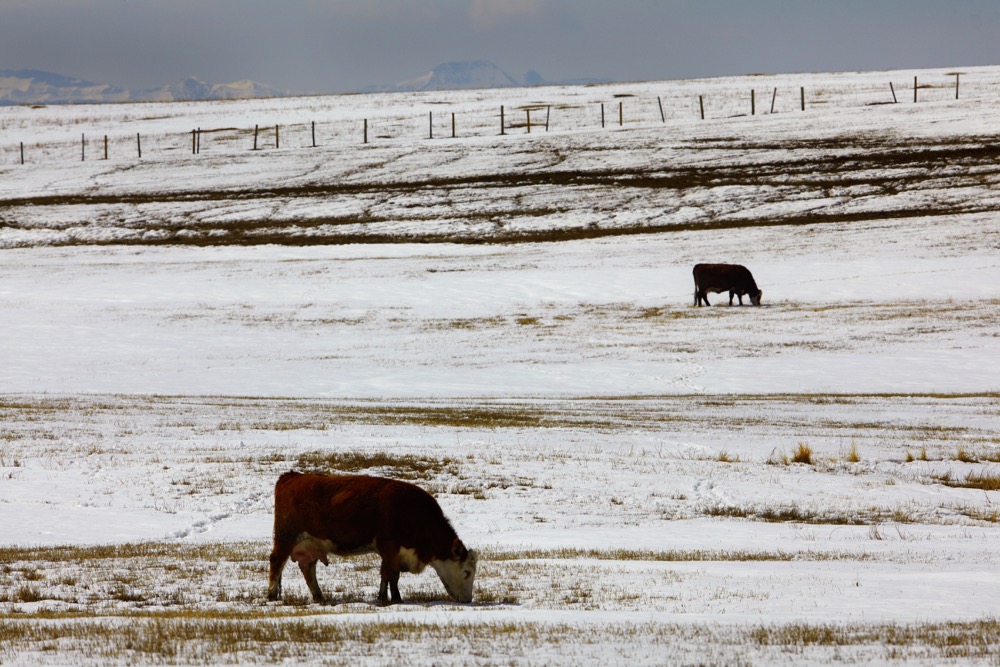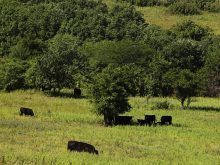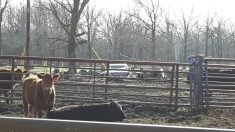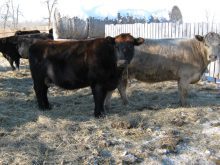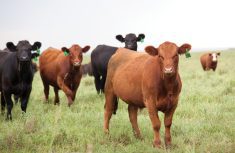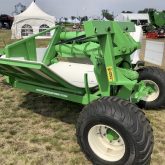Many beef producers this fall confirmed a surprising number of open cows after they brought them home. I speculate that not enough feed last winter, a record-breaking cold winter and a wet spring failed to prepare many beef cow herds for good conception rates. Fortunately, most producers now have good feed inventory, which I am confident will help overwinter their cow herd in the necessary body condition for upcoming calving and breeding seasons.
It’s no secret that a good calving/breeding season depends upon these beef cows meeting their basic energy requirements at all times. They increase by at least 50 per cent from early gestation to the day of calving. It’s estimated that a 1,300-pound mature brood cow requires about 52 to 55 per cent TDN during her last trimester of pregnancy. Protein, mineral and vitamin requirements also increase, but by no more than 15 to 25 per cent.
We also must provide beef cows with a supply of extra dietary energy to guard against the cold. University research has come up with this cold weather rule of thumb: for every 1 C drop below 0 C, a beef cow’s TDN energy maintenance requirements increase by about two per cent. Although this is only an estimate and is based on effective air temperatures, producers can also utilize windchill temperatures without adjustments if their cow herd has limited shelter. This means that if our early-morning windchill temperature is -25 C, there is an increase of about 50 per cent in the cow’s energy needs.
Read Also
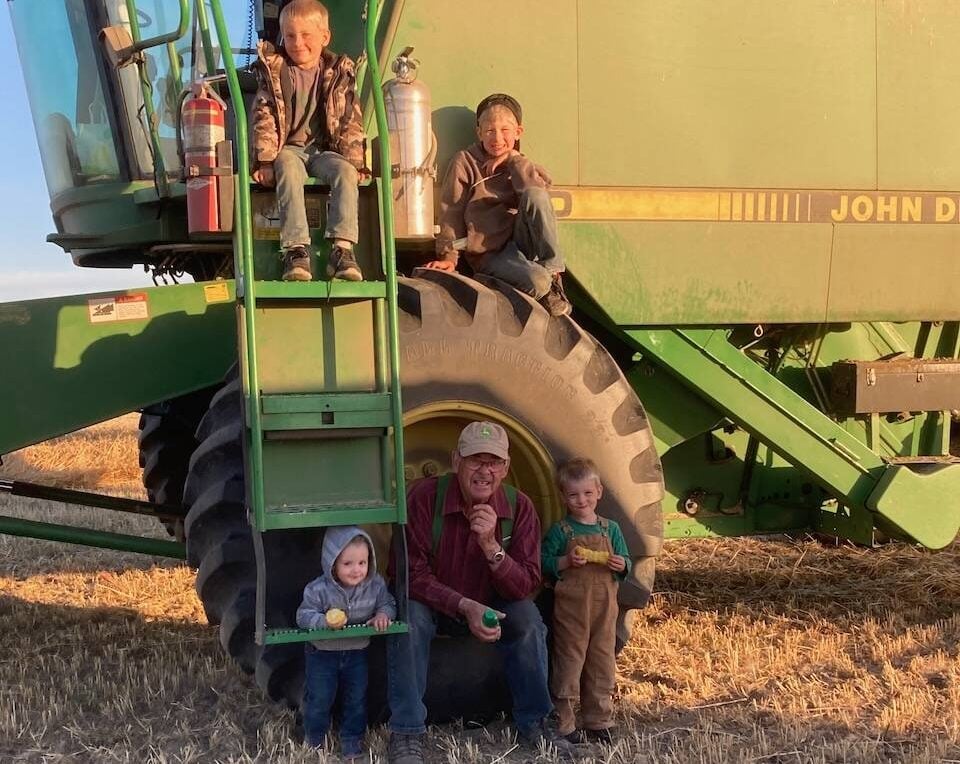
Harvest wraps up and fall work begins
At the Eppich famly ranch in western Saskatchewan, the fall harvest was successful with few breakdowns, cows and calves have been sorted and a new tractor has arrived
[RELATED] Canadian Cattlemen: Picking replacement heifers
The only way we are really going to know that overwintering beef cows are getting enough energy from their feed is if they can maintain a fall body condition score (BCS) of 5 to 6 until calving time and right after. (Note: first calf-heifers should calve out a BCS of 6.0.) In the end, all cows with this optimum body condition will have fewer calving problems and better colostrum/milk production. Then later on it should also mean those animals should have fewer days to active estrus, and higher conception rates.
Feed consumption increases
Fortunately, during a typical Canadian winter, the cow herd also acclimatizes to cold weather. For example, a friend who operates a 200-cow-calf operation notices that when temperatures dip down to -25 C, his cows eat at least one-third more feed, only limited by the size of their bellies. It’s their scientific way of telling us that heat production of the cow (at the cellular level) becomes a metabolic priority to help keep them warm.
As a beef nutritionist, it’s now my job to provide the best overwintering diets. I primarily focus on their energy aspects, but I don’t forget to feed sufficient dietary protein, especially in the diets that contain low-protein straw (six per cent protein). That’s because I want to also meet the protein requirements of the cow’s rumen microbes that drive forage and grain fermentation that unlocks dietary energy for late-gestating cows. I also put together a winter mineral, which is fed at about 100 grams per day with elevated levels of trace minerals, especially copper and vitamins A and E.
[RELATED] Canadian Cattlemen: Feeding the pregnant beef cow
The table below shows some of my suggested dry lot diets that demonstrate the increase in the overall winter plane of nutrition fed to 1,200-lb. mature cows and 1,100-lb. replacement heifers for the next few months before calving.
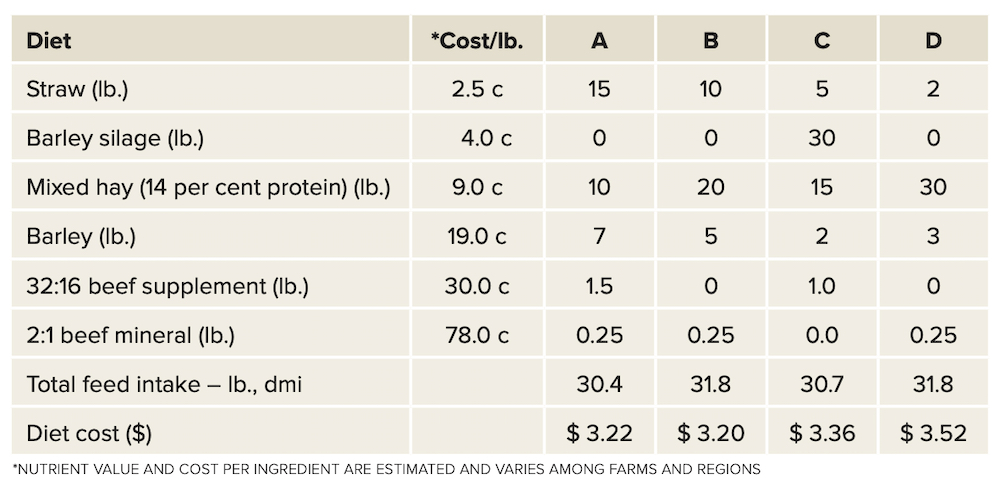
This is only a sample of diets that are actually fed to overwinter beef cows in a dry lot. Yet the same philosophy holds true, whether producers are overwintering their cows in a standing cornfield, swath-grazing pasture or a different feeding program. That means the main purpose of any good winter-feeding strategy is to increase the cow herd’s plane of dietary energy to maintain vitality and optimum body condition and to help them cope with frigid weather. The payoff is to be ready for a successful calving and breeding season.


